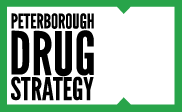Like alcohol and tobacco, cannabis use has health risks. These risks increase based on how long and how often you use cannabis, the potency of the product, your method of consumption (e.g., smoke, vape, eat), your family history and your age.
Some people are more vulnerable to the potential harms of cannabis. These groups include children and youth under the age of 25, a fetus or nursing child, and those with a family history of psychosis.
Heavy or regular cannabis is also associated with several adverse health outcomes, including:
- problems with thinking, memory or physical co-ordination
- impairment, which can lead to serious injuries, including those from car accidents
- hallucinations, such as seeing, hearing, tasting, smelling or feeling things that do not really exist
- mental health problems, specifically if you or an immediate family member has had a mental health issue, like psychosis or an addiction to alcohol or other drugs
- cannabis dependence
- breathing or lung problems from smoking
- cancer from smoking
- problems during or after pregnancy, especially if cannabis is smoked1
If you use cannabis, it is important to be aware of these risks and how you can reduce or avoid them. For more information on limiting these risks, Canada’s Lower-Risk Cannabis Use Guidelines may be helpful.
1Canadian Public Health Association. (2018). Cannabasics. Retrieved from: https://www.cpha.ca/sites/default/files/uploads/resources/cannabis/cannabasics-2018-fact-sheets-e.pdf
